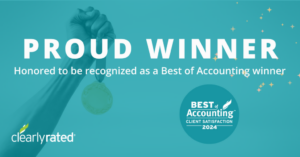Key Takeaways:
- The SECURE Act 2.0 includes many provisions affecting 403(b) retirement plans. Make sure your nonprofit is adhering to the rules and implementing optional enhancements where they make sense.
- For example, beginning Jan. 1, 2024, employers can provide pension-linked emergency savings accounts that staffers can use to save for financial emergencies.
- Non-profits also can start making matching contributions to 403(b) accounts based on participants’ student loan payments.
Certain aspects of the SECURE Act 2.0 from 2022, which serves as a continuation of the SECURE Act from 2019, have been active for over a year, impacting various aspects of 403(b) retirement plans. If your non-profit organization provides employees with a 403(b) plan, it’s likely that you’ve made minor adjustments in 2023 and possibly more substantial ones as of January 1, 2024. Additionally, a few additional provisions are set to take effect in 2025 and 2026. To ensure compliance with relevant regulations and to implement improvements where necessary, it’s advisable to review these significant provisions of the SECURE Act 2.0.
Key Changes Effective January 1, 2024
1. Pension-linked emergency savings accounts (PLESAs)
Non-profit employers may allow their workers to contribute to Pension-Linked Emergency Savings Accounts (PLESAs), linked to their 403(b) plans. These contributions are after-tax, and the balance from employee contributions is capped at $2,500, subject to inflation adjustments. Employees usually find it easier to withdraw funds from a PLESA compared to obtaining 403(b) plan hardship distribution or loan.
2. Student Loan Payment Matches
Employers have the option to provide matching contributions to employees’ 403(b) accounts corresponding to their student loan payments. This measure aims to assist employees in accumulating retirement savings, particularly if their student loan obligations hinder their ability to contribute.
Effective January 1, 2025
3. Automatic Enrollment
Non-profit organizations must provide automatic enrollment for new plans established after 2024. Employees will have the option to opt out if they don’t want to participate in the program. It’s important to note that organizations with 10 or fewer employees or those that have been operational for less than three years aren’t required to meet this mandate.
4. Enhanced Catch-Up for Older Employees
In general, individuals aged 50 or above are allowed to make supplementary “catch-up” contributions to their 403(b) plans. SECURE 2.0 will extend this provision to enable employees aged 60 to 63 to contribute even more substantially, either $10,000 (adjusted for inflation) or 150% of the regular catch-up limit, whichever amount is higher.
5. Part-Time Worker Participation
According to the initial SECURE Act, part-time employees can join their employers’ 403(b) plans if they complete 500 hours of service annually for three consecutive years. However, beginning in 2025, the eligibility threshold will decrease from three years to two years.
Modifications Effective from January 1, 2026
6. Catch-Up Contributions for High Earners
Changes to 403(b) catch-up contribution regulations were originally slated to take effect in 2024. However, in 2023, the IRS introduced a two-year transition period to assist non-profit organizations in adjusting to the new regulations. Beginning in 2026, employees who earned over $145,000 in the prior year (adjusted for inflation) will be permitted to make catch-up contributions exclusively to a Roth 403(b) account.
Another provision related to Roth 403(b) accounts came into force in 2022: Employees have the option to request that their employer directs matching contributions to their Roth 403(b) account, provided the non-profit offers this option. Previously, matching contributions were only allowed to be directed to an employee’s traditional account, even if the employee contributed to a Roth account.
What Stays the Same (For Now)
As usual, contributions to traditional 403(b) plans accumulate tax-deferred within participants’ accounts, and withdrawals are subject to taxation—typically during retirement when participants are in a lower income tax bracket. Employee contributions are deducted from paychecks before taxes.
The contribution limit for 2024 remains at $23,000 for 403(b) plans, with individuals aged 50 or older eligible to make catch-up contributions of an additional $7,500. Moreover, participants who have served your non-profit for over 15 years may qualify to contribute an extra $3,000 annually, provided this provision is included in your plan. Contact us if you have questions regarding 403(b) limits or any changes under the SECURE Act 2.0.



